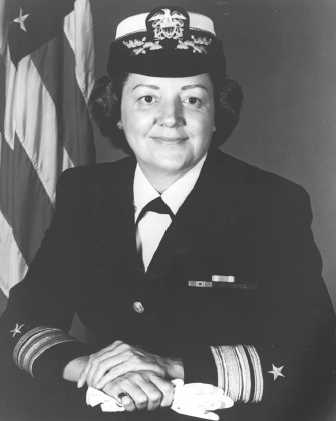| |
standards of neatness and good behavior as those
required of men in uniform.
In short, they were fitted into the Navy as an
integral part of the service. They slipped into the
same spot in the chain of command as the men
they replaced and performed the same duties. This
system gave Navy women—or WAVES, as they
were
popularly
called—the
same
status,
responsibilities, and restrictions as men.
Use of the term WAVES had begun when
women were given the Reserve classification of W-
V(S), meaning Women-Volunteer (Specialist).
Since the initials WR and the term Women’s
Reserve were official, some women preferred these
terms to the equally official, but less formal, use of
WAVES.
As the Women’s Reserve observed its second
anniversary on 30 July 1944, it could look back
upon a brief but glowing record of expansion and
achievement. During its 2 years of existence, the
Women’s Reserve had freed enough officers and
men to crew a fleet of 10 battleships, 10 aircraft
carriers, 28 cruisers, and 50 destroyers.
In World War II, WAVES were considered
directly eligible for 34 different ratings and were
performing nearly every conceivable type of duty
at 500 naval shore establishments.
Since the WAVES had proved their worth
during the war, the Navy was reluctant to give up
its programs for women. A number of Navy
women were retained in service; but by the fourth
anniversary of the program, only 9,800 remained
on active duty.
The Women’s Armed Services Integration Act,
Public Law 625, marked the most significant
milestone to that date in the history of women
service members. This act, passed by the Senate
and the House and signed by President Truman
on 12 June 1948, gave women full partnership on
the Navy team. The Women’s Reserve was
abolished and, for the first time, women became a
part of the Regular Navy.
In February 1976 the Navy promoted Fran
McKee (fig. 2-19) to rear admiral. She made her
mark in naval history as the first woman
unrestricted line officer to be selected for flag
rank.
134.215
Figure 2-19.-Rear Admiral Fran McKee is the
first woman unrestricted line officer
promoted to flag rank in the U.S. Navy.
At the same time the Regular Navy opened to
women, the Reserve established a program for
women service members. The new laws abolished
the Women’s Reserve and authorized the transfer
of all members to appropriate components of the
permanent Naval Reserve.
SUMMARY
All of the men, women, ships, and battles you
have just studied were of value to our Navy. They
have all created traditions and set examples for us
to follow. Although we may never have the chance
to create history of the magnitude they did, we
still hold fast to the same principles and goals they
sought. Our Navy is steeped with tradition. Many
present-day Navy policies have carried over
through years of tradition. This chapter is a
tribute to the many great tradition makers who
have served before us.
2-31
|

